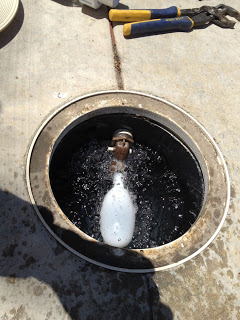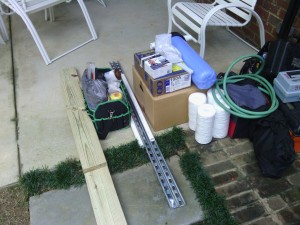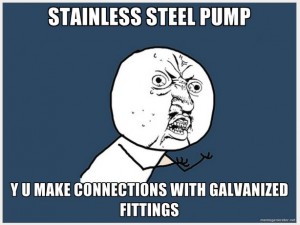
Everyone who has ever considered using their well to keep their swimming pool topped-off knows that you should manage iron and manganese content, as well as pH before you use it to fill the pool or you can end up with stains or pitting.
No-one seems to consider another critical issue when they tie their well to their pool autofill: the potential for short-cycling of the pump. The potential for damage can be easily reduced, but it may never be eliminated. To learn more, read on…
There are two styles of pool autofills: In-Line Solenoid and the more common Float-Valve types. Both types can cause problems for a well pump system, but the Float-Valve type is usually the most damaging, because it “pinches” the valve closed as the pool gets closer to full.
The problem usually occurs when a well pump system has been designed for use in an irrigation system with big zones operating at 18-20 gpm/ 65 psi. If the pool gets a lot of use: kids splashing around in the pool causing and the autofill to bob, calling for a quart per minute; a 20-gallon pressure tank set at an operating pressure of 60 psi will hold about 7 gallons of water, a standard pump will want to run for less than 20 seconds every 28 minutes. That means the pump will start up to 48 times per day, just to service the pool.
All that starting cause major wear on the pump and control system.
A slow leak can cause have the same effect, and since the autofill is in service, no-one may ever notice the problem, or chock it up to normal evaporation. BTW- the highest monthly evaporation rate in Atlanta is less than 1/2″ per week. Put into perspective: a 20 x 30 pool should lose less than 200 gallons per week to normal evaporation.
Solenoid Autofills will do the same thing, they just call for bursts of water. This would usually be preferred, in that it releasing more water may reduce the frequency of cycles, but it can actually cause the pump to cycle even more frequently, under certain conditions.
Another type of pump control- Variable Flow Drive systems- promise the moon, but although they are capable of running at the low speeds the autofills are calling for, the various pump manufacturers caution against running them at low flow rates for extended periods of time, citing excessive wear to the pump components.
The best way to protect your pump system is to install a timed valve on the pool autofill supply line and set it to run for maybe 2 or 3 hours per night when you would not normally be using the pool and the water should be still. That minimum quart per minute flow rate will put more than enough water into the pool to manage normal evaporation, plus any splash-out that occurred during the day’s use.
If you are using an irrigation control valve to do this, setting it to run overlapped with the normal operation of the irrigation system will be even better, as it will just add to the total volume being used; the irrigation system would not miss that quart a minute, and the pump will not feel the stress of the low flow of the autofill alone.
It has taken us years of trial and error to discover this problem- many deep-well pumps have been replaced, and many control boxes serviced, at no small expense or inconvenience. We are happy to finally offer this solution, in hopes that it will help alleviate any further unexpected system failures.


Pingback: Groundwater: An Economically Vital Resource | Miller Well Drilling
Pingback: Infographic: WellCheck℠ Well Inspection | Miller Well Drilling